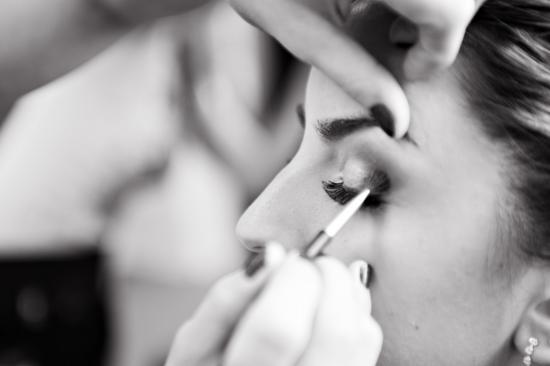
Asbestos in Cosmetics: What You Need to Know
Since 2017, nearly a dozen makeup products on the market have been pulled from store shelves following reports of asbestos contamination. Considering the severity of health issues that stem from exposure to asbestos, consumers shouldn’t have to worry about its presence in makeup. Consumers should never have to wonder if their makeup is harmful to themselves or their loved ones. In order to avoid asbestos tainted makeup, we want to provide some information and ways to eliminate the risk of harmful cosmetics.
What is Asbestos?
Asbestos is a naturally occurring fibrous material that has been used in a wide variety of building and consumer products. Because of its tensile strength and resilience to heat, it was used as an additive in building materials for decades. Stricter regulations around asbestos were put in place in the 1980s after severe health issues began to arise in individuals who had worked with the material in the past. However, in the U.S. today, there is still up to 1% allowed in some products.
Asbestos exposure is known to cause a number of respiratory diseases. When these microscopic fibers are airborne, they can be inhaled or ingested, leading to irritation in the lungs and airways. Once in the body, these fibers can lead to issues such as asbestosis and pleural effusions, both of which lead to difficulty breathing and chest pains. While these are chronic conditions that can be subsided with treatment, they can also be indicators of asbestos related cancers such as mesothelioma, ovarian cancer, and lung cancer. Because of the similarity of respiratory symptoms with all of these diseases, it may require several different health screenings and biopsies to accurately diagnose an asbestos-related condition.
Talc, Asbestos, and Makeup
Similar to asbestos, talc is a naturally-occurring mineral that is mined to be used in products. As an ingredient that adds a silky texture with the ability to absorb moisture, talc is popular to use as a base in cosmetics to enhance the quality of makeup. Talc can be found in a number of beauty products including eyeshadows, blush, and powder foundations. While talc is generally deemed safe to use, asbestos is often found alongside talc, which is how asbestos can contaminate talc-based products.
Due to a lack of talc regulations in the United States, cosmetic products and their ingredients aren’t required to undergo the Federal Drug Administration’s (FDA) approval and review. In addition, the FDA does not strictly regulate proper labeling or require the disclosure of safety information, which is why asbestos continues to be discovered in talc-based products today. Even though it has been stated by several federal organizations that no amount of asbestos is safe to come into contact with, the U.S. is still one of several countries without a full ban on asbestos.
Steps to Using Safe Cosmetics
While the FDA occasionally issues a warning or product recall for contaminated items, there are other steps individuals and families can take in order to safely avoid asbestos. Keeping top of mind the lack of regulations when it comes to makeup, thoroughly read through the ingredient list when purchasing cosmetics. Talcum powder may be listed as talcum powder, talcum, talc, cosmetic talc or magnesium silicate in an ingredient list. Resources such as the Environmental Working Group’s Skin Deep Database can be an easy way to check if your cosmetics or personal care products are deemed safe to use.
The only way to completely eliminate the risk of using makeup that could contain asbestos is to purchase cosmetics that are marked talc-free. Searching for more organic and natural-based beauty products can also be beneficial in avoiding other toxins that makeup may contain, such as parabens or phthalates.
Safety, Awareness, and Advocacy
Your and your loved ones health is paramount. In order to eliminate the threat of asbestos in cosmetics, a greater conversation with our lawmakers and governing bodies is necessary to help better regulate cosmetic testing laws and regulations. Consumers who refuse to buy talc-based products can force companies to find safer alternatives to what they’re putting in their products. Take a look through your cosmetics to see what is talc-based, you may be surprised to see the amount of products that will contain this ingredient.







